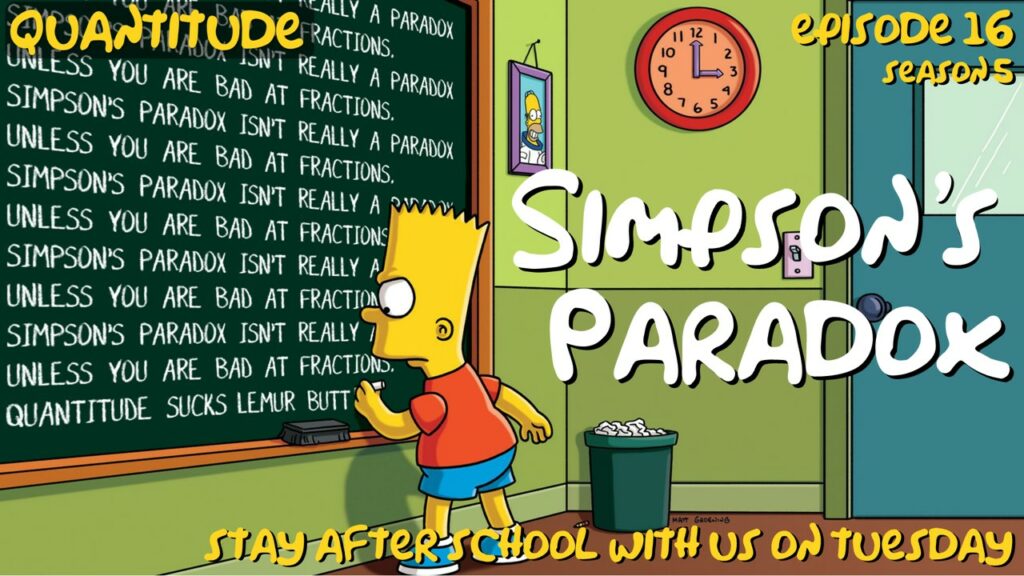In this week’s episode Greg and Patrick talk all about Simpson’s Paradox: what it is, examples of where it occurs in real life, and why we might not really need to think about it as a paradox at all. Along the way they also discuss Apple Vision, The Simpsons predicting the future, sitting too close to the TV, low levels of radiation, Paul the octopus, Blinky, shtuff, duck duck duck, Jonathan the tortoise, batting averages, bad at fractions, Cal Berkeley admissions, GDP and happiness, exercise and heart attacks, and Double Super Secret whatever.
Related Episodes
- S2E30 ‘Always Center Your Predictors!’ And Other Sh*t My Advisor Says
- S2E29 Multilevel Models — The Often Unnecessary Green Monster
- S1E26 The Internal Validity Pre-Flight Checklist
- S5E14 Regression to the Mean
- S5E05 Multilevel Models Unleashed
Suggested Readings
Blyth, C. (1972). On Simpson’s paradox and the sure-thing principle. Journal of the American Statistical Association, 67, 364–366.
Kievit, R. A., Frankenhuis, W. E., Waldorp, L. J., & Borsboom, D. (2013). Simpson’s paradox in psychological science: A practical guide. Frontiers in Psychology, 4, 513.
Pearl, J. (2022). Comment: understanding Simpson’s paradox. In Probabilistic and causal inference: The works of Judea Pearl (pp. 399-412).
Pearl, J., & Mackenzie, D. (2018). The book of why: the new science of cause and effect. Basic books.
Simpson, E. H. (1951). The interpretation of interaction in contingency tables. Journal of the Royal Statistical Society, 13, 238-241.
Wagner, C. H. (1982). Simpson’s paradox in real life. The American Statistician, 36, 46-48.
Wainer, H. & Brown, L.M. (2004). Two statistical paradoxes in the interpretation of group differences: Illustrated with medical school admission and licensing data. The American Statistician, 58, 117-123.
Yule, G. U. (1903). Notes on the theory of association of attributes in statistics. Biometrika, 2, 121-134.

